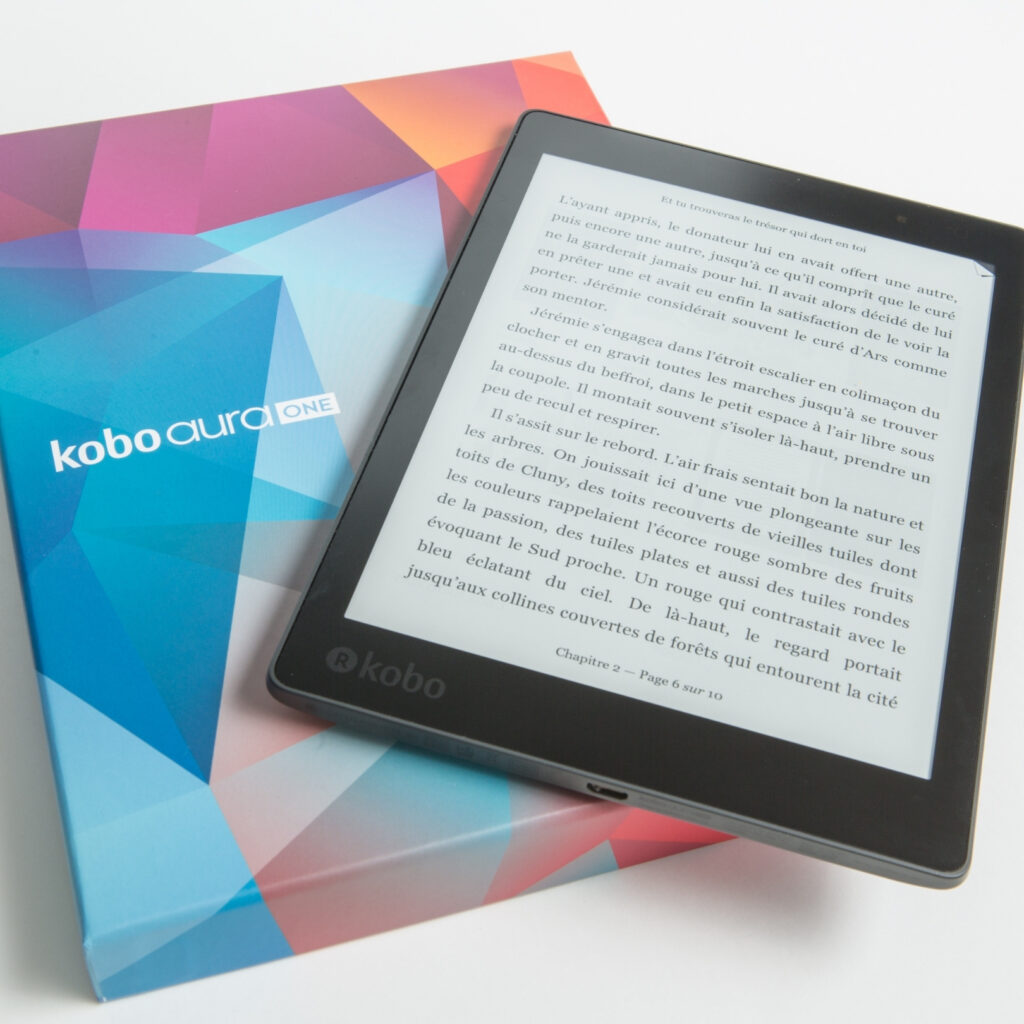Table of Contents
- What is an e-book?
- Advent of E-readers
- Project Gutenberg
- What is the best e-book format?
- The rising popularity of e-books
- So, back to the question, who is the inventor of e-books?
- Final thought
We all have read e-books and used e-books as part of our learning materials. E-books have become a big part of our life today.
I myself have some limited experience spearheading an e-book project for my organization.
But have we ever wondered this question: who invented e-books?
In this article, we will look at the brief history of e-books and digital publishing, considering some of the historical accounts and scholarly narratives in the literature.
As with many other historical narratives, answers to who invented e-books are pretty much divided.
We will look into these different narratives together, and at the end of the day, we can have a better understanding and appreciation of where things come from.

What is an e-book?
First off, what is an e-book?
An e-book is a digital publication format that is read using electronic devices such as tablets, mobile phones, desktops, etc.
To read an e-book, you need an e-reader.
An e-reader is a handheld, portable device that you can carry anywhere. The e-reader allows you to download books, magazines or news and read.
Buying an e-book (and reading it right away) is a superfast process. Once you identify the title, you go through the purchase process, and voila, you start reading. The instant delivery makes it highly popular.
With printed books, even if you made a purchase online without going out, you will have to wait for it to reach home.
Advent of E-readers

In the 1980s, a few technologies were introduced to pave the way for e-readers to become a reality.
Since the earliest e-books were created long before e-readers came into existence, it took a long time before e-books began to gain traction in the market. For more than a decade, technology integration remained a massive challenge.
Works to introduce e-books started actively in the 1980s, but most of the early works involved institutional research rather than for commercial purposes. The early versions of e-readers helped researchers and academics to provide portability and allowed them to take notes.
The e-readers were mostly used by scholars and professionals who wanted a lightweight device that could be carried around and used easily.
The first commercial e-reader was believed to have been created by two entrepreneurs, Martin Eberhard (also a co-founder of Tesla) and Marc Tarpenning.
Called the Rocketbook, Martin and Marc pitched the e-reader to Amazon founder, Jeff Bezos who turned down the opportunity to back the technology since the device required a physical connection to a computer for download e-books.
Remember that this was 1997 where digital publishing was still a very new, different landscape from today.
Rocketbook had a short-lived success when Barnes and Noble acquired the company, helping to sell for a few hundred thousand devices. Sadly, due to plummeting demand later, they pulled the plug.
A decade later, when the e-books entered far into the mainstream market, Amazon produced its very own e-reader called Kindle, which remains popular until today.
The Kindle has been sold in the millions, and Jeff Bezos made it clear that the device would continue to be sold at a cost-competitive price.
Today’s advancement in mobile phone technologies has also allowed e-books to be sold, downloaded, and read easily. In a way, the mobile phone industry has become a competition with e-reader manufacturers.

Project Gutenberg
What is Project Gutenberg?
Project Gutenberg is an e-book publishing project started by Michael Hart in 1971. The name Gutenberg is credited to Johan Gutenberg, a German inventor who introduced the world’s first printing press.
Many sources, therefore, credit Hart as the inventor of e-books, including those from the scholarly field.
Project Gutenberg is the Wikipedia of digital publishing; it allows users to freely download and read available e-books without registering as a user.
Michael Hart was an American author who sought to make e-books more accessible across borders. He wanted e-books to be free for everyone, irrespective of the cost.
Project Gutenberg was run at the University of Illinois, United States. The university granted Hart access to the computers and facilities to make the project a reality.
To make the e-books available for free, Michael sourced books and publications that are no longer copyrighted and available in the public domain.
The earlier versions of the e-books in Project Gutenberg were in plain text format before it diversified into other usable formats, including PDF, HTML, EPUB and MOBI.
Most of the early e-books in the project were English before it began to add different languages.
Today, Project Gutenberg is considered the world’s most popular e-book library with more than 60,000 titles.
Before Project Gutenberg, the literature indicates that efforts to produce electronic books have begun as early as the 1930s. However, information is sparse. A few unfamiliar names have been mentioned as part of the earlier effort to digitalize books.
Some of these include Angela Ruiz Robles, a school teacher who invented a gadget in 1949 to convert printed text electronically for her students.
When they are more substance to share, I would definitely look into it and share.
What is the best e-book format?
The earliest e-book format was just plain text.
The format then evolved to PDF, HTML, EPUB, MOBI and many others to cater to different devices, platforms and screen sizes.
Identifying the best e-book format is a subjective matter. It depends on various factors, and we need to look at it from both the readers’ and the publishers’ points of view.
A reader would want a format that is easy to read and interact with. A publisher would also want user-friendly e-books that can be secured digitally to protect them from the illegal download.
One of the most widely used e-book formats is EPUB, a standard endorsed by the International Digital Publishing Forum or IDPF, a publishing trade association. By the time of this writing, IDPF has ceased to exist after combining with W3C.
EPUB is widely accepted due to its user-friendliness, ability to add interactive elements (audio, video, quizzes, etc.), and security. EPUB is the format we settled with to break into the international e-book market.
Amazon, the e-commerce giant, adapted its own MOBI format, which possesses many similarities with EPUB.
Another popular e-book format is PDF. Though lacking fancy features, PDFs are adopted quite easily, mainly from those consuming digital content via desktop or tablets.
The rising popularity of e-books
The e-book market has continued to grow by leaps and bound (with occasional normalization). It has been estimated that by 2021, more than 80% of adults will have read e-books using various devices.
A study by KBV Research indicates that the market size for the global e-book distribution is expected to reach $23.8 billion by 2026. This growth affects every major continent: North America, Europe, Asia and Latin America.
One of the reasons that help boost e-book growth is the content variation that comes with e-book technology.
With e-books, you can do much more than reading. You can watch videos, answer interactive quizzes, share content or even interact with other learners.
More e-books are being translated into different languages to reach out to more people. e-Books have also become the medium of choice for publishers, especially in academic and scientific fields.
Today, you can also “listen” to books with audiobooks. As they say, listening is the new reading.
Circumstances also helped to expand the usage of e-books. For example, when the Covid-19 pandemic hit the world in 2019, professionals and learners were forced to isolate themselves.
E-books became a crucial element that allows learning and content consumption to continue during the physical distancing.
Since e-books are weightless, you can practically carry hundreds or even thousands of titles around with you any time, and anywhere you go. You can carry your one device to your office, hometown, school, university or even during the holiday.
Variation of content formats, interactivity and digital elements quickly transforms the book industry into the “content industry” today.
So, back to the question, who is the inventor of e-books?
Based on the discussion, Michael Hart is credited as the person who invented e-books by mass-converting printed books into digital format and making them available to the community.
Final thought
Indeed, e-books have become part and parcel of our life now. Thanks to the discovery and initiatives by inventors and technology pushers, we are benefiting from rapid changes in content.
Certainly, e-books will continue to evolve at a record pace. They will get better and better, and the new generation will adapt to e-books even quicker than the current generation.
What is also important is that plenty of people have been working tirelessly to make reading and learning easy for students and readers. Therefore, we must also express gratitude to other past inventors, teachers and scholars who have contributed to the rise of e-books.

27 thoughts on “Who Invented E-books? A Brief History of Digital Publishing”